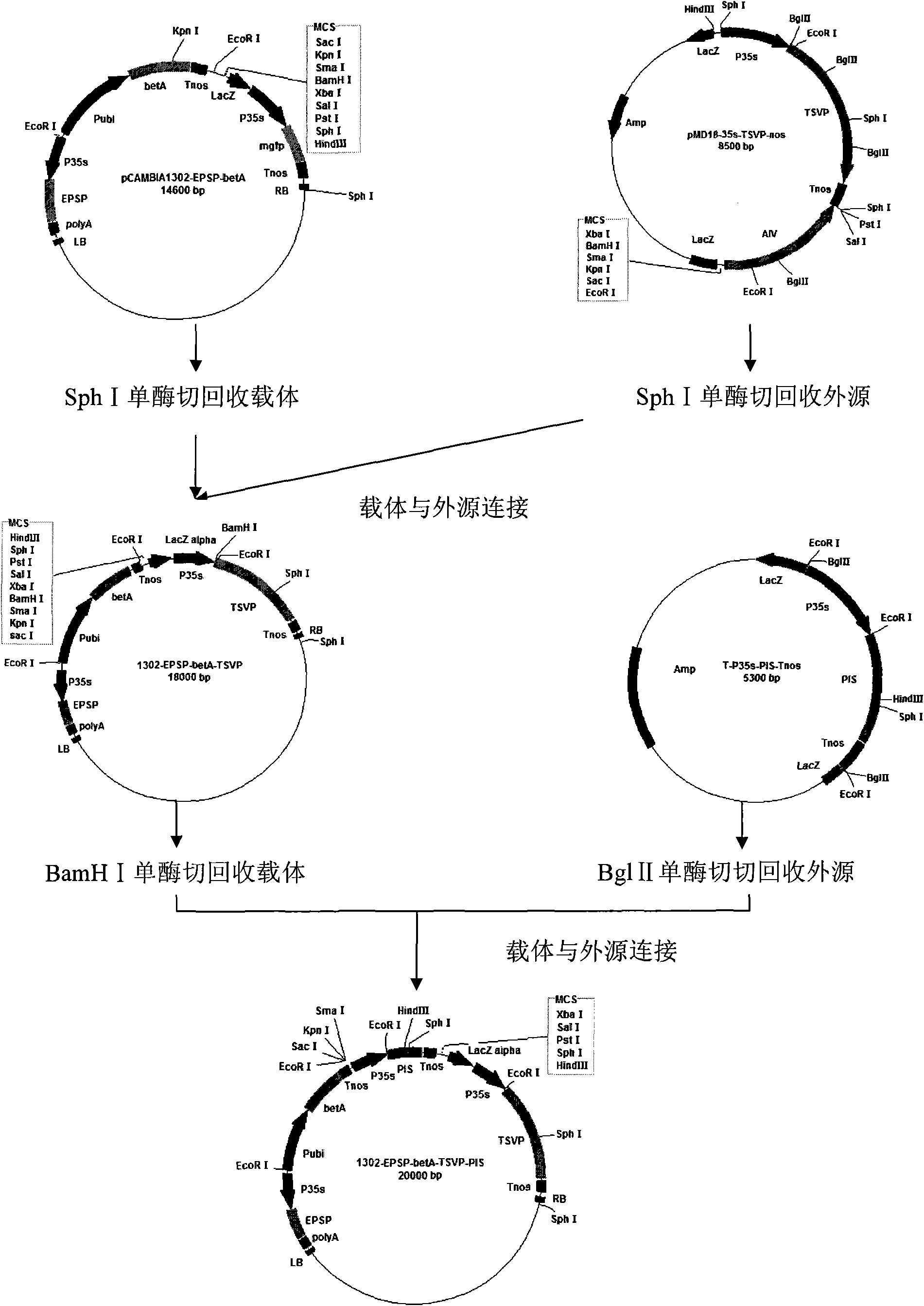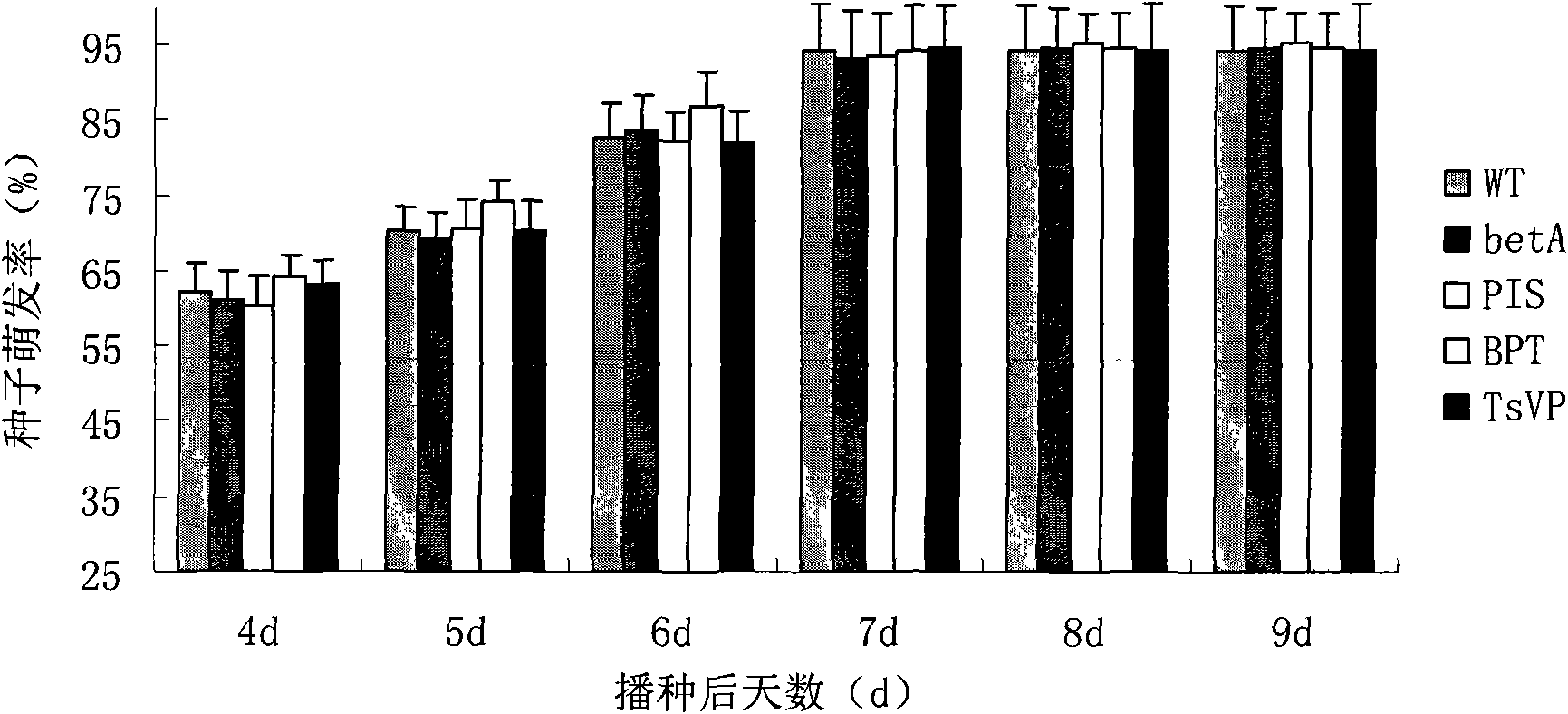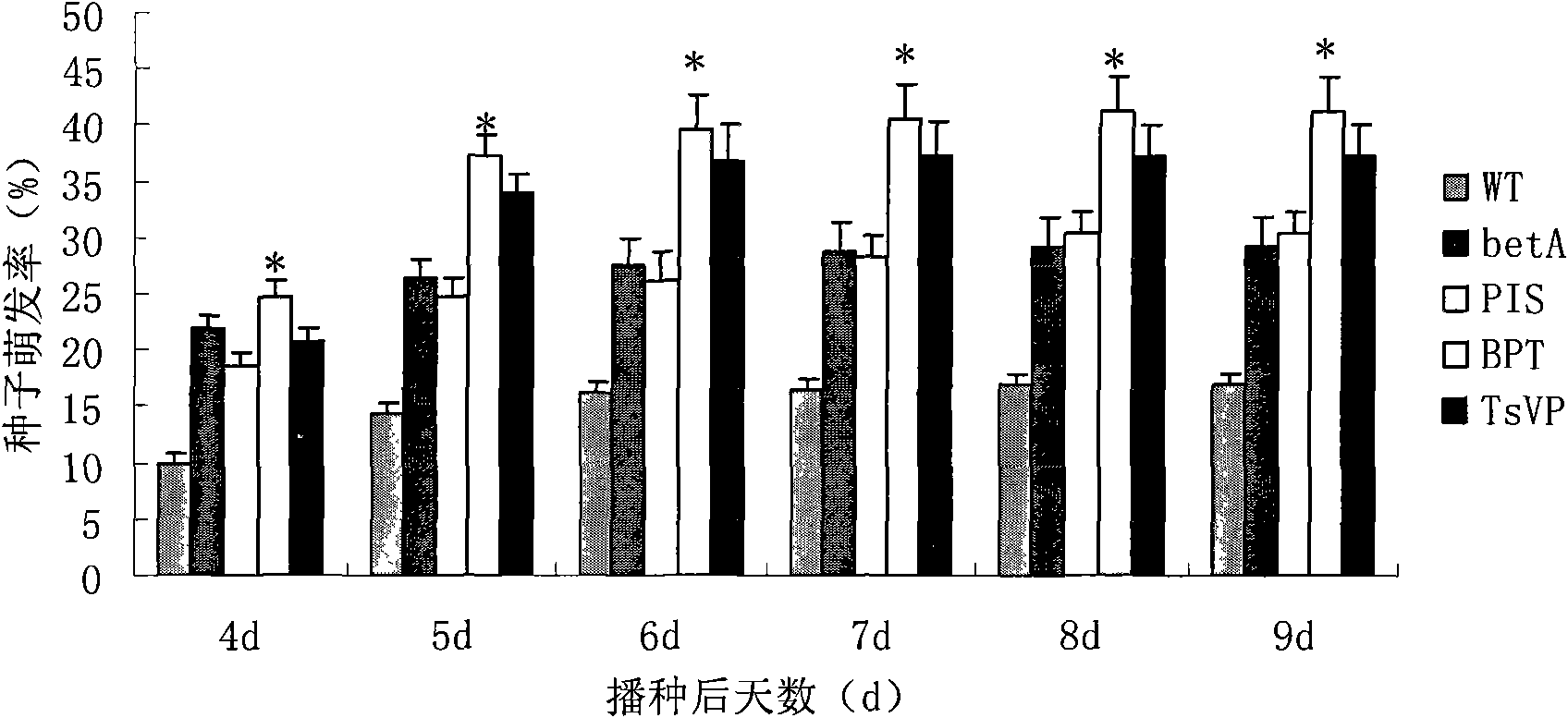Method for heightening salt tolerance and drought tolerance of cotton by polymeric stress-resistant gene
A drought tolerance and gene technology, applied in the field of bioengineering breeding of crops, can solve problems such as salt tolerance and drought tolerance that have not been seen
- Summary
- Abstract
- Description
- Claims
- Application Information
AI Technical Summary
Problems solved by technology
Method used
Image
Examples
Embodiment 1
[0045] Example 1: Create an excellent cotton breeding material resistant to salt and alkali
[0046] 1. Construction of plant expression vectors
[0047] The target gene and the selectable marker gene of the transgenic plant are inserted into the plant transgenic expression vector through multi-step recombination using conventional molecular biology methods. For the construction process of the plant expression vector pCAMBIA1302-EPSP-betA-PIS-TsVP, see figure 1 . In this example, the target gene is the choline dehydrogenase gene betA from Escherichia coli, the pyrophosphatase gene Ppase (TsVP) on the tonoplast membrane from Salmus japonica, and the key enzyme of the phosphoinositide signaling pathway from corn Phosphatidylinositol synthase PIS gene. The selectable marker gene is the herbicide resistance gene EPSP (EPSPS: Enolpyruvylshikimate-3-phosphate synthase)
[0048] The specific recombination process is as follows: the plant expression vector pCAMBIA1302-EPSP-betA is...
Embodiment 2
[0063] Example 2: Creating excellent cotton breeding materials with significantly improved drought tolerance
[0064] 1. Construction of plant expression vectors
[0065] The construction of the plant expression vector is the same as that of the plant expression vector in Example 1.
[0066] 2. Acquisition of cotton transgenic plants
[0067] The acquisition of cotton transgenic plants is the same as that of the cotton transgenic plants in Example 1.
[0068] 3. Drought tolerance detection of transgenic plants
[0069] The transgenic plants are self-crossed or sister-bred to set fruit after flowering. The seeds are sown in the field or in the greenhouse. When the plants grow to the 4-6 leaf stage, the leaves are taken to extract DNA, and PCR technology is used to detect whether there is an exogenous gene. Transgenic positive plants were taken for stress resistance testing.
[0070] Transgenic cotton delinted by sulfuric acid and Lumianyan 19 (control) seeds were planted i...
PUM
 Login to View More
Login to View More Abstract
Description
Claims
Application Information
 Login to View More
Login to View More - R&D
- Intellectual Property
- Life Sciences
- Materials
- Tech Scout
- Unparalleled Data Quality
- Higher Quality Content
- 60% Fewer Hallucinations
Browse by: Latest US Patents, China's latest patents, Technical Efficacy Thesaurus, Application Domain, Technology Topic, Popular Technical Reports.
© 2025 PatSnap. All rights reserved.Legal|Privacy policy|Modern Slavery Act Transparency Statement|Sitemap|About US| Contact US: help@patsnap.com



